Extract Numbers From String In Excel
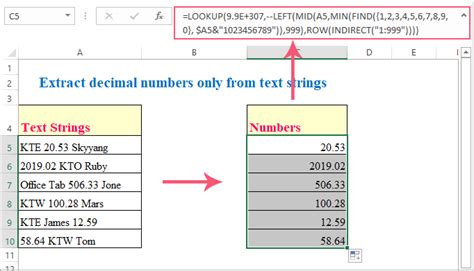
Extracting Numbers from Strings in Excel

Excel is a powerful tool used for various data manipulation tasks, including extracting numbers from strings. This can be particularly useful when dealing with data that combines numbers and text, such as product codes, IDs, or measurements. In this article, we’ll explore how to extract numbers from strings in Excel using various methods, including formulas and VBA scripts.
Understanding the Problem
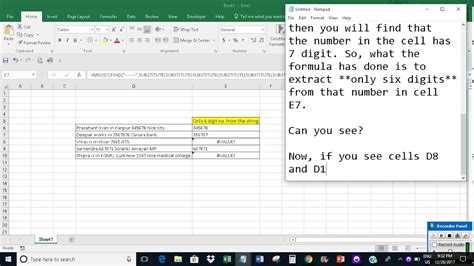
Before diving into the solutions, let’s consider a common scenario where you might need to extract numbers from a string. Suppose you have a list of product codes in the format “ABC123DEF” and you want to extract the numbers “123” from each code. This task can be accomplished using Excel formulas or more advanced techniques like VBA macros.
Method 1: Using Excel Formulas
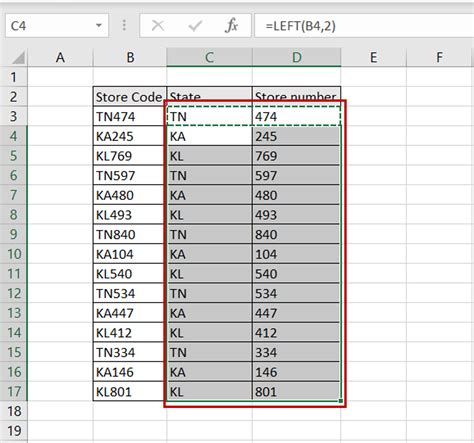
One of the simplest ways to extract numbers from a string in Excel is by using formulas. Here are a few approaches:
Using the
TEXTandVALUEFunctions: If your string contains a fixed number of digits that you want to extract, you can use a combination of theTEXTandVALUEfunctions along with theMIDfunction to achieve this. However, this method is more applicable when the position of the numbers is known and consistent.Using the
FILTERXMLFunction (Available in Excel 2019 and Later): For more complex extractions, especially when the position of the numbers varies, theFILTERXMLfunction can be very handy. The formula might look something like this:=FILTERXML("<t><d>"&A1&"</d></t>","//d[number()=.]")This formula treats the string as XML and extracts the numeric part. However, it might not work perfectly for all scenarios, especially if there are multiple numbers in the string.
Using the
REGEXFunction (Available in Excel 2019 and Later with Office 365): TheREGEX(Regular Expressions) function provides a powerful way to extract patterns from strings. To extract numbers, you could use a formula like this:=REGEXREPLACE(A1,"[^0-9]","")This formula removes all non-numeric characters from the string, effectively extracting the numbers.
Method 2: Using VBA Macros
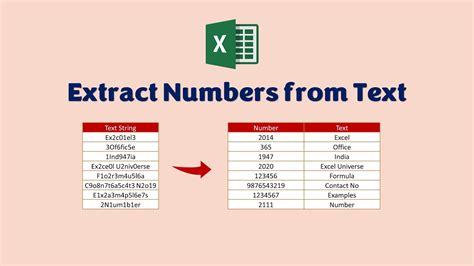
For more complex scenarios or when working with older versions of Excel that do not support the newer functions, VBA (Visual Basic for Applications) macros can be incredibly useful.
- Creating a VBA Function: You can create a custom function in VBA that loops through each character in a string, checks if it’s a number, and if so, adds it to a result string. This approach gives you full control over how the extraction is performed.
Here’s an example VBA function:
Function ExtractNumbers(str As String) As String
Dim result As String
For i = 1 To Len(str)
If IsNumeric(Mid(str, i, 1)) Then
result = result & Mid(str, i, 1)
End If
Next i
ExtractNumbers = result
End Function
To use this function, simply call it from a cell like any other Excel function: =ExtractNumbers(A1).
Method 3: Using Third-Party Add-ins
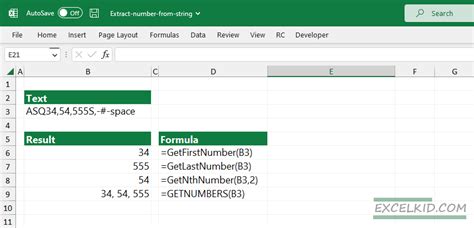
There are also third-party add-ins available for Excel that provide advanced text manipulation capabilities, including the extraction of numbers from strings. These tools often offer a user-friendly interface and can be more straightforward to use than writing your own VBA macros or using complex formulas.
💡 Note: When using third-party add-ins, ensure they are from reputable sources to avoid any security risks.
Choosing the Best Method
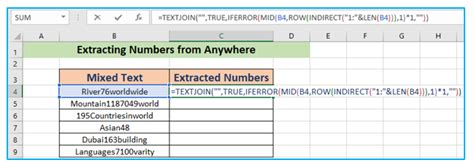
The best method for extracting numbers from strings in Excel depends on your specific needs, the version of Excel you’re using, and your comfort level with formulas and VBA. For simple, one-time extractions, a formula might suffice. For more complex or repetitive tasks, a VBA macro could be more efficient. Consider the complexity of your strings, the consistency of the data, and whether you need to perform this task regularly when deciding which approach to use.
In summary, extracting numbers from strings in Excel can be accomplished through various methods, ranging from simple formulas to more complex VBA scripts. By choosing the method that best fits your needs, you can efficiently manipulate your data and achieve your goals.
What is the most straightforward way to extract numbers from a string in Excel?
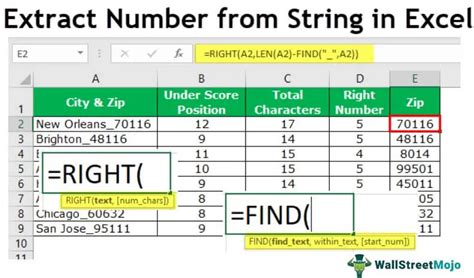
+
The most straightforward way often involves using formulas such as the REGEXREPLACE function if you have access to it, or creating a simple VBA function for more control.
Can I extract numbers from strings without using VBA or third-party add-ins?
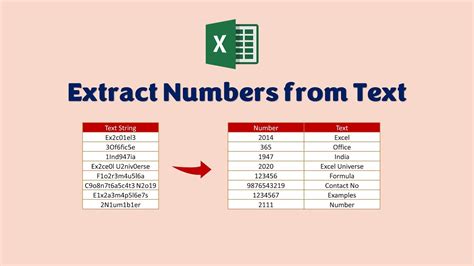
+
Yes, you can use Excel formulas like REGEXREPLACE or FILTERXML for this purpose, provided you are using a version of Excel that supports these functions.
How do I decide which method is best for my specific task?

+
Consider the complexity of your data, the version of Excel you’re using, and whether you prefer a formula-based approach or are comfortable with VBA. Also, think about whether this is a one-time task or something you’ll need to do regularly.